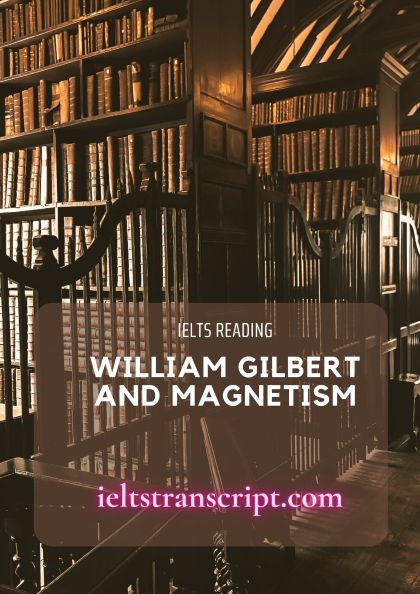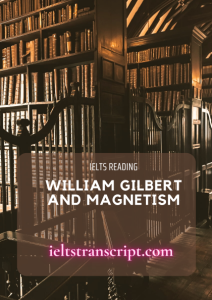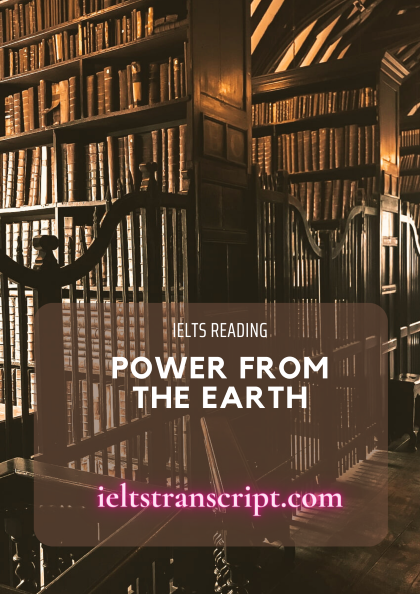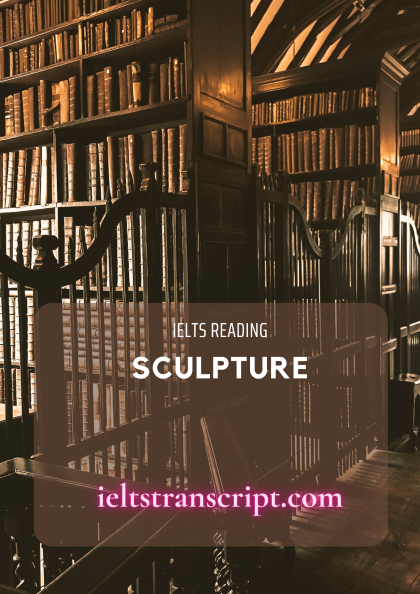- Đối với sản phẩm có giá: Sau khi chúng tôi ghi nhận thông tin đã thanh toán sản phẩm của bạn, sản phẩm sẽ được mở khóa và bạn có thể xem trực tiếp và tải tài liệu sản phẩm.
- Đối với thành viên trả phí: Bạn có thể mua và thanh toán sản phẩm với giá 0đ để tải tài liệu sản phẩm.
- Bạn có thể liên hệ với chúng tôi để được hỗ trợ mở khóa sản phẩm sớm nhất.
WILLIAM GILBERT AND MAGNETISM
- Chúng tôi chấp nhận các phương thức thanh toán sau đây: Thẻ tín dụng, thẻ ghi nợ, PayPal, chuyển khoản ngân hàng và tiền mặt.
Chúng tôi sẽ không thu thêm phí cho bất kỳ hình thức thanh toán nào.
- Nếu bạn gặp vấn đề về sản phẩm của chúng tôi trong thời gian sử dụng, vui lòng liên hệ với chúng tôi để được hỗ trợ xử lý sớm nhất nhé.
Xem trước mẫu
William Gilbert and Magnetism
A –The 16th and 17th centuries saw two great pioneers of modern science: Galileo and Gilbert. The impact of their findings is eminent. Gilbert was the first modern scientist, also the accredited father of the science of electricity and magnetism, an Englishman of learning and a physician at the court of Elizabeth. Prior to him, all that was known of electricity and magnetism was what the ancients knew, nothing more than that the lodestone possessed magnetic properties and that amber and jet, when rubbed, would attract bits of paper or other substances of small specific gravity. However, he is less well known than he deserves.
B – Gilbert’s birth pre-dated Galileo. Born in an eminent local family in Colchester County in the UK, on May 24, 1544, he went to grammar school, and then studied medicine at St John’s College, Cambridge, graduating in 1573. Later he travelled in the continent and eventually settled down in London.
He was a very successful and eminent doctor. All this culminated in his election to the president of the Royal Science Society. He was also appointed personal physician to the Queen (Elizabeth I), and later knighted by the Queen. He faithfully served her until her death. However, he didn’t outlive the Queen for long and died on November 30, 1603, only a few months after his appointment as personal physician to King James.
C – Gilbert was first interested in chemistry but later changed his focus due to the large portion of mysticism of alchemy involved (such as the transmutation of metal). He gradually developed his interest in physics after the great minds of the ancient, particularly about the knowledge the ancient Greeks had about lodestones, strange minerals with the power to attract iron. In the meantime, Britain became a major seafaring nation in 1588 when the Spanish Armada was defeated, opening the way to British settlement of America. British ships depended on the magnetic compass, yet no one understood why it worked. Did the Pole Star attract it, as Columbus once speculated; or was there a magnetic mountain at the pole, as described in Odyssey, which ships would never approach, because the sailors thought its pull would yank out all their iron nails and fittings? For nearly 20 years, William Gilbert conducted ingenious experiments to understand magnetism. His works include On the Magnet, Magnetic Bodies, and the Great Magnet of the Earth.
D – Gilbert’s discovery was so important to modern physics. He investigated the nature of magnetism and electricity. He even coined the word “electric”. Though the early beliefs of magnetism were also largely entangled with superstitions such as that rubbing garlic on lodestone can neutralise its magnetism, one example being that sailors even believed the smell of garlic would even interfere with the action of compass, which is why helmsmen were forbidden to eat it near a ship’s compass. Gilbert also found that metals can be magnetised by rubbing materials such as fur, plastic or the like on them. He named the ends of a magnet “north pole” and “south pole”. The magnetic poles can attract or repel, depending on polarity. In addition, however, ordinary iron is always attracted to a magnet. Though he started to study the relationship between magnetism and electricity, sadly he didn’t complete it. His research of static electricity using amber and jet only demonstrated that objects with electrical charges can work like magnets attracting small pieces of paper and stuff. It is a French guy named du Fay that discovered that there are actually two electrical charges, positive and negative.
E – He also questioned the traditional astronomical beliefs. Though a Copernican, he didn’t express in his quintessential beliefs whether the earth is at the centre of the universe or in orbit around the sun. However, he believed that stars are not equidistant from the earth but have their own earth-like planets orbiting around them. The
...William Gilbert và Từ học
A –Thế kỷ 16 và 17 chứng kiến hai nhà tiên phong vĩ đại của khoa học hiện đại: Galileo và Gilbert. Những phát hiện của họ có ảnh hưởng rất lớn lao. Gilbert là nhà khoa học hiện đại đầu tiên, cũng được xem là cha đẻ của khoa học điện và từ tính, ông là học giả người Anh và là bác sĩ của triều đình Elizabeth. Trước ông, tất cả những gì người xưa biết về điện và từ tính không có gì khác ngoài viên đá có từ tính (đá nam châm), đá hổ phách và đá hổ phách đen, khi cọ xát chúng sẽ hút các mẩu giấy hoặc các vật chất có trọng lượng riêng nhỏ. Tuy nhiên, ông ít được mọi người biết đến hơn so với những điều ông xứng đáng được nhận.
B –Gilbert’s sinh trước Galileo. Sinh ra trong một gia đình địa phương nổi tiếng ở Quận Colchester, Anh quốc, vào ngày 24 tháng 5 năm 1544, ông học trung học, và sau đó học y khoa tại Trường Cao đẳng St John, Cambridge, tốt nghiệp năm 1573. Sau đó, ông đi du lịch khắp lục địa châu Âu và cuối cùng ổn định cuộc sống tại Luân Đôn.
C –Ông là một bác sĩ rất thành công và lỗi lạc. Tất cả điều này lên đến đỉnh điểm khi ông được bầu vào chức chủ tịch của Hiệp hội Khoa học Hoàng gia. Ông cũng được bổ nhiệm làm bác sĩ riêng cho Nữ hoàng (Elizabeth I), và sau đó được Nữ hoàng phong tước hiệp sĩ. Ông trung thành phục vụ Nữ hoàng cho đến khi bà qua đời. Tuy nhiên, ông không sống lâu hơn Nữ hoàng và qua đời vào ngày 30 tháng 11 năm 1603, chỉ vài tháng sau khi được bổ nhiệm làm bác sĩ riêng cho Vua James.
D –Gilbert ban đầu thích hóa học nhưng sau đó đã đổi sự tập trung của mình do bị thu hút bởi sự huyền bí của thuật giả kim (chẳng hạn như sự biến đổi của kim loại). Ông dần dần ngày càng phát huy niềm yêu thích với vật lý kế tục tiếp những bộ óc vĩ đại của người xưa, đặc biệt là về kiến thức mà người Hy Lạp cổ đại có được về đá nam châm, những khoáng chất kỳ lạ có sức hút sắt. Trong khi đó, nước Anh trở thành một quốc gia chuyên đi biển lớn vào năm 1588 khi Hạm đội của Tây Ban Nha – Spanish Armada bị đánh bại, mở đường cho sự định cư của người Anh trên đất Mỹ. Các con tàu của Anh phụ thuộc vào la bàn từ, nhưng không ai hiểu tại sao nó hoạt động. Phải chăng sao Bắc cực đã hút nó, như Columbus từng suy đoán; hay có một ngọn núi từ tính ở cực, như được mô tả trong tác phẩm Odyssey (Ô-đi-xê), nơi mà các con tàu sẽ không bao giờ đến gần, bởi vì các thủy thủ nghĩ rằng lực kéo của nó sẽ giật tung tất cả các đinh sắt và phụ tùng của con tàu? Trong gần 20 năm, William Gilbert đã tiến hành các thí nghiệm tài tình để hiểu về từ tính. Các tác phẩm của ông bao gồm Luận về nam châm, Các vật từ tính và Từ tính của trái đất
E –Khám phá của Gilbert rất quan trọng đối với vật lý hiện đại. Ông đã nghiên cứu bản chất của từ tính và điện. Ông thậm chí còn đặt ra một từ vựng mới “điện”. Mặc dù những niềm tin ban đầu về từ tính cũng phần lớn bị cuốn theo những mê tín dị đoan như việc chà tỏi lên đá nam châm có thể làm vô hiệu hóa từ tính của nó, một ví dụ là các thủy thủ thậm chí tin rằng mùi tỏi sẽ cản trở hoạt động của la bàn, đó là lý do tại sao người ta cấm người lái tàu ăn tỏi gần la bàn tàu. Gilbert cũng phát hiện ra rằng kim loại có thể bị từ hóa bằng cách cọ xát các vật liệu như lông thú, nhựa hoặc những vật chất tương tự lên chúng. Ông đặt tên cho các đầu của nam châm là “cực bắc” và “cực nam”. Tuy nhiên, ngoài ra, sắt thông thường luôn bị nam châm hút. Mặc dù ông đã bắt đầu nghiên cứu mối quan hệ giữa từ tính và điện, nhưng thật buồn là ông đã không hoàn thành nó. Nghiên cứu của ông về tĩnh điện bằng cách sử dụng hổ phách và hổ phách đen chỉ chứng minh rằng các vật thể mang điện có thể hoạt động giống như nam châm hút các mảnh giấy và đồ vật nhỏ. Chính một chàng trai người Pháp tên là du Fay đã phát hiện ra rằng thực sự có hai điện tích, dương và âm.
F –Ông cũng đặt câu hỏi về niềm tin thiên văn truyền thống. Mặc dù là một người theo thuyết nhật tâm Copecnic, nhưng ông không thể hiện bằng niềm tin tinh túy của mình rằng trái đất là trung tâm của vũ trụ hay nằm trong quỹ đạo quanh mặt trời. Tuy
...Để xem được đầy đủ nội dung và tải dữ liệu, bạn phải trở thành thành viên của chúng tôi và trả phí cho tài liệu (nếu có)











